- Front Case Fan Not Spinning: [3 Proven Fixes That Work - June 22, 2022
- Is 60 Degrees Celsius Hot For A CPU In 2022? [Must-Read] - June 7, 2022
- How To Handle CPU Temps Jumping: A Definitive Guide [2022] - June 2, 2022
Do you want to know the difference between D-sub vs. HDMI cables?
Are you confused between the two and can’t decide which one to pick for your needs?
Well, if that’s the situation, then you have landed on the right place.
So what’s the difference between a D-sub cable and an HDMI cable?
The main difference between D-Sub vs HDMI is that HDMI has a transfer rate of 10.2 Gbps. On the other hand, D-Sub which is a little outdated technology has a transfer rate of 2.25 Gbps. Another major difference is that D-Sub lacks video support, encryption and supports only analog signals. The advantage of HDMI over D-Sub is that HDMI supports 4k resolution
So if you are interested to discover the differences between D-Sub vs. HDMI in detail, then keep on reading!
Contents
D-sub Vs. HDMI Compared
| Factors | D-Sub | HDMI |
| Cable Type | Analog Standard only | Both Audio and Video signals |
| Technology | Dated | Latest |
| Video Quality | Lower | Higher |
| Input Lag | High | Low |
| 4K Resolution | No | Yes |
| Full HD Support | Yes | Yes |
D-sub and HDMI: Detailed Comparison
Before diving into the technical details, let’s see what D-sub and HDMI cables are. These two types of cables are widely used to connect devices with multimedia gadgets, including televisions, projectors, computers, etc.
That being said, you can also hook up your speakers with a cable that is compatible with both these standards. In simple words, you can also connect speakers with HDMI to get surround sound.
Now that you have a basic understanding about what D-sub and HDMI cables are, let’s get started with the detailed comparison.
A General Overview of D-sub
As noted earlier, this is short for Digital Sub microdevice. It consists of three digital pins and 15 analog pins.
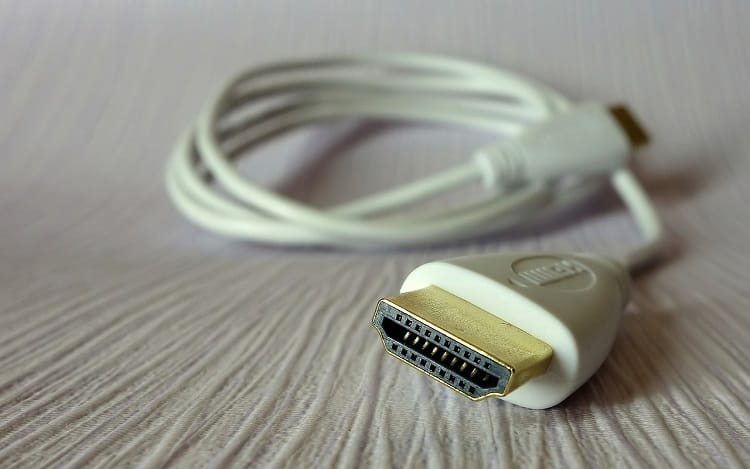
In this connection, a male connector is used on both the devices, which can be placed within a few inches of each other.
So you don’t need to worry about space while connecting your device with a D-sub cable.
This type of connection is primarily used in old school projectors and televisions that lack modern technological advancements.
A General Overview of HDMI
This abbreviation stands for High Definition Multimedia Interface and has 19 pins (19-pin female port and a 19-pin male connector). It provides better audio and video quality than the D-sub cable.
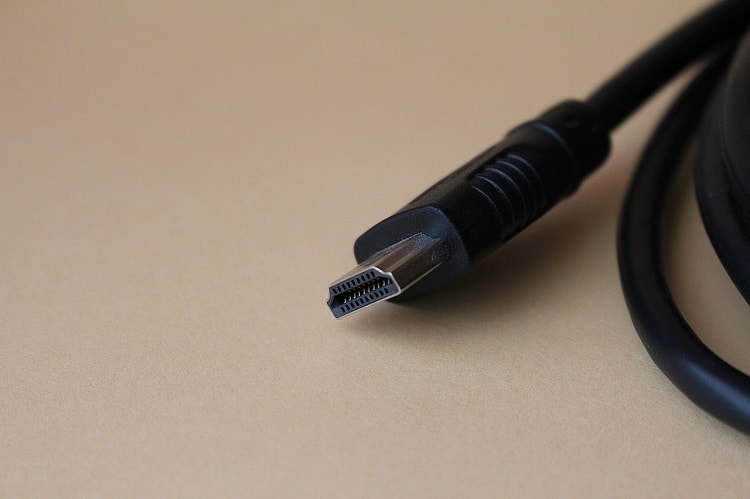
Furthermore, it also comes with Ethernet support that can help you share your internet connection over a cable.
Almost all the modern multimedia gadgets use this technology, from smartphones to laptops, etc.
In addition to this, HDMI cables have been extensively adopted for gaming consoles. If you want to connect your PS4 or Xbox One to a monitor, HDMI ports will be a great choice!
The difference in Transmission Speed
The first and most crucial point is transmission speed. Speaking of this, the old VGA cables can only offer 2.25 Gbps.
In contrast to this, the newer HDMI cables can quickly provide a transfer rate of 10.2 Gbps, making them far superior to the old VGA/D-sub cables.
D-Sub Lacks 3D Video Support
The second-biggest shortcoming of D-sub is that it does not support 3D video.
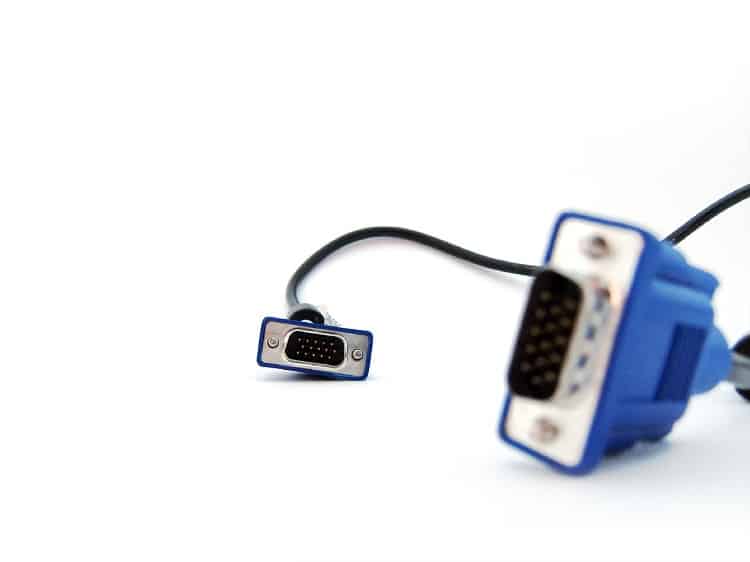
Conversely, HDMI cables have been embracing this technology for a long time and can easily provide you with a high-quality 3D experience!
Suggested Read – is AMD fx 8350 good for gaming.
Distortion in Images
The next significant disadvantage of the old-style VGA/D-sub cables is that they do not support HDCP (High bandwidth Digital Content Protection).
On the other hand, HDMI has been able to successfully overcome this problem by using unique content protection!
Due to this issue, people tend to face distortion in images with time whenever they are using D-sub or VGA cables. However, HDMI is free from such problems, which are mostly preferred nowadays.
D-Sub Lacks Data Encryption
Another problematic area in D-sub cables is that they don’t encrypt the data sent from one device to another. In this regard, HDMI proves to be a secure option, as it can protect your data from unauthorized access.

An increased layer of protection helps in protecting the user data from being sniffed or lost during the transmission. It is another plus point of the HDMI cables.
D-Sub Supports Only Analog Connection
Here is a video explaining the different types of available connection technologies:
In addition to all of these problems, you cannot connect your HDMI device to a D-sub interface. In this regard, you cannot connect your laptop to an old-school projector with the help of HDMI.
HDMI Supports Both Audio and Video
If we talk about one more significant difference between d sub vs. HDMI, it must be audio support. According to this, HDMI cables can easily support both audio and video!
In contrast, D-subs only provide support to analog signals. So if you are planning to connect your headphones with a VGA cable, they will not be able to produce any sound.
Input Lag is Higher on HDMI Cables
Yes, one of the significant drawbacks of HDMI cables is that they produce a bit more input lag than VGA cables.
In simple words, you might notice a slight delay between your action and execution if you are using an HDMI cable for gaming.
This happens mainly due to the post-processing of video. However, you can cope with the input lag if you want to. You can turn off the post-processing function by enabling your device’s “gaming mode”.
Speaking of Speed, check out our guide on 15000 rpm hard drive vs. SSD
Sound Delay on D-sub Cables
In addition to this, D-sub cables also have a pretty significant input lag. But you don’t need to worry about it if you are using an amplifier for sound transmission.
Another thing you need to know when using the D-sub cable is that the audio can get a bit distorted compared to the video signal.
HDMI Cables Are Costly
Yes, another major drawback of HDMI cables is that they are more expensive than VGA cables. If you compare them directly, you will find that their price difference is not very much in most cases!
But when we consider other factors like transfer speed and transmission rate, the cost difference becomes very significant.
HDMI Has More Supported Connections
The last significant difference between d sub vs. HDMI is its supported connections.
In this regard, D-sub cables provide support for almost all kinds of connections except HDMI and USB.
In comparison, HDMI cables can easily connect to devices with various connection types, including VGA, USB, Ethernet, etc.
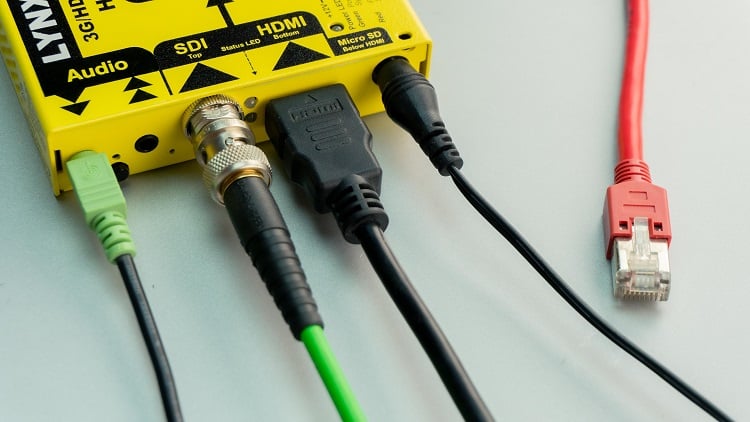
In contrast to the VGA/D-Sub cable, you have a minimal option, and that is through the serial port.
With this being said, it’s now time for you to decide which cable will be the best choice for your device?
As far as my opinion is concerned, we would suggest HDMI over a D-sub just because they are the future!
Also, Read – is 8ms good for gaming.
Now that you know the major differences between both types of cables, there might be some other questions on your mind regarding the VGA and HDMI cables. If that’s the case, then keep reading!
What are D-sub cables?
D-sub stands for “Digital Visual Interface.” D sub port (DVI) cables are designed to deliver high resolutions up to 2048 x 1536 pixels.

The most common types of VGA cables are HD15 or DB15, which have three rows with 13 pins each inside them!
Most people may get confused between the d-sub vs. DVI cables, mainly because both types are used for connecting terminal devices to a computer with the help of video signal transmission.
This type of cable uses an analog method to carry out the transmission of data signals. They use multiple pins during this process, which can be problematic over time!
That’s why most people prefer using DVI cables nowadays, since they are digital and provide support for both video and audio signals!
VGA Cable Connectors
There are usually three types of plugs included in these cables as far as connectors go. They include BNC, DVI-A, and DVI-I. Talking about their usage, BNC is mainly used on PCs.
The other two connectors are used on home theater devices. DVI-A is a standard connection, while its counterpart DVI-I can be used with analog and digital connections.
How Does HDMI Work?
In simple words, HDMI cables transmit data for both audio and video signals in a single cable. This cable can transmit up to eight channels simultaneously, instead of only one or two like before.
The comparison of DVI vs. HDMI is almost the same as that of the VGA vs. HDMI
What Technology Makes DVI Cables Different from VGA?
Compared to VGA cables, DVI cables do not support analog signals, and they provide digital signals instead. What makes them different from HDMI is their transmission speed and resolution capacity.
But these specifications are pretty much similar when considering other specifications like color encoding and audio support.
Is D-sub Worth It?
Well, in our opinion, if you are a professional in the entertainment industry, then it might be worth buying D-sub cables. This is mainly because they support very high resolutions and color encoding.
But when it comes to home users, we would suggest using HDMI cables instead, since they provide much better transmission speed and resolution capacity.
Also, they are digital, so you do not have to worry about their color encoding or audio support!
Best D-Sub Cable
Speaking of the best D-Sub cables, we found the Amphenol CS-DSPMHD15MM-012 quite interesting on Amazon.
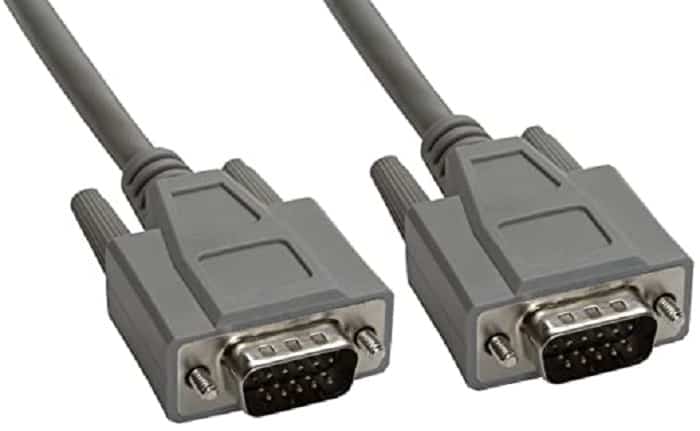
These are the finest quality cables currently available on the market that come with faster data rates.
Moreover, these cables have a thick protective coating that makes them suitable for long-term usage.
Is HDMI Worth It?
Well, HDMI cables are worth it! They offer support to resolutions of 1080p or 720p, along with color encoding.
If these features are not enough for you, they also provide support for 3D images. Also, they provide support for multichannel audio and audio return channel.
This is all you need to know about D-sub vs. HDMI cables! Now the choice is yours! So make sure that you select the suitable cable for your device.
Best HDMI Cable
Speaking of the best HDMI cables, we found the Amazon Basics High-Speed HDMI Cable the top pick. Why?
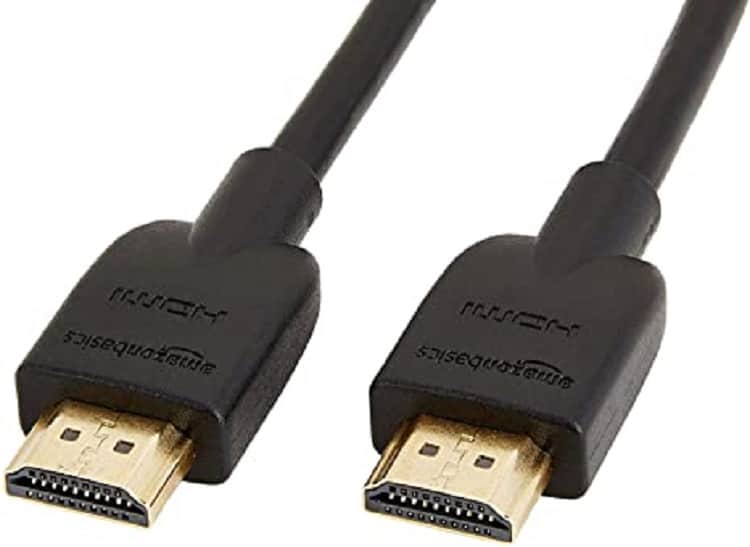
Because it offers all the features, you might be looking for in an HDMI cable! Features like Ethernet, 3D, Audio return channel, and much more.
Interchanging D-sub with HDMI?
If you have a D-sub cable and want to replace it with an HDMI cable, there is no need to worry. Both of these cables can be used interchangeably, and you will not face any compatibility issues whatsoever!
You will need to make sure that you purchase the other end of the cable (male or female) for your device. There are converters available that offer plug and play kind of convenience.
FAQ
Is D-Sub or HDMI better?
From the above comparison, you have seen that the D-Sub cables are outdated and used for old-school devices. However, the HDMI cables are far more advanced in technology, making them better than the D-subs.
Better image quality is achieved by using digital encoding rather than analog encoding. A 24-bit value encodes every pixel in an uncompressed 1080p video.
D-Sub port transfers the signal only in two voltage levels (0 and 3.3V), making it impossible to discriminate between individual pixels.
What is the D-Sub port used for?
D-Sub ports were used as the main port for connecting devices such as printers, computer monitors, and some old school TVs, which served to transfer data between those devices.
However, with the rise of new devices such as flat-panel computer monitors and LCD TVs using digital input ports such as HDMI and Displayport, D-sub is becoming obsolete.
Does HDMI to D-Sub work?
Absolutely yes, you can connect a D-Sub monitor to any HDMI-enabled device with the help of an HDMI to D-sub converter.
Are D-Sub and VGA the same thing?
Yes, D-sub and VGA are the same things. However, VGA is an older form of D-sub which has been phased out by HDMI, Displayport, and other advanced digital input ports.
Final Words
In the end, all we can say is that both these cables are very different from each other! They have some key differences as well as similar features. If you want a high resolution, then go for HDMI.
If you need support for analog signals, then select VGA. It’s that simple!
If you have any doubts, please ask them in the comments section below. We will be more than happy to help you out.
(Featured Image via: hp.com)

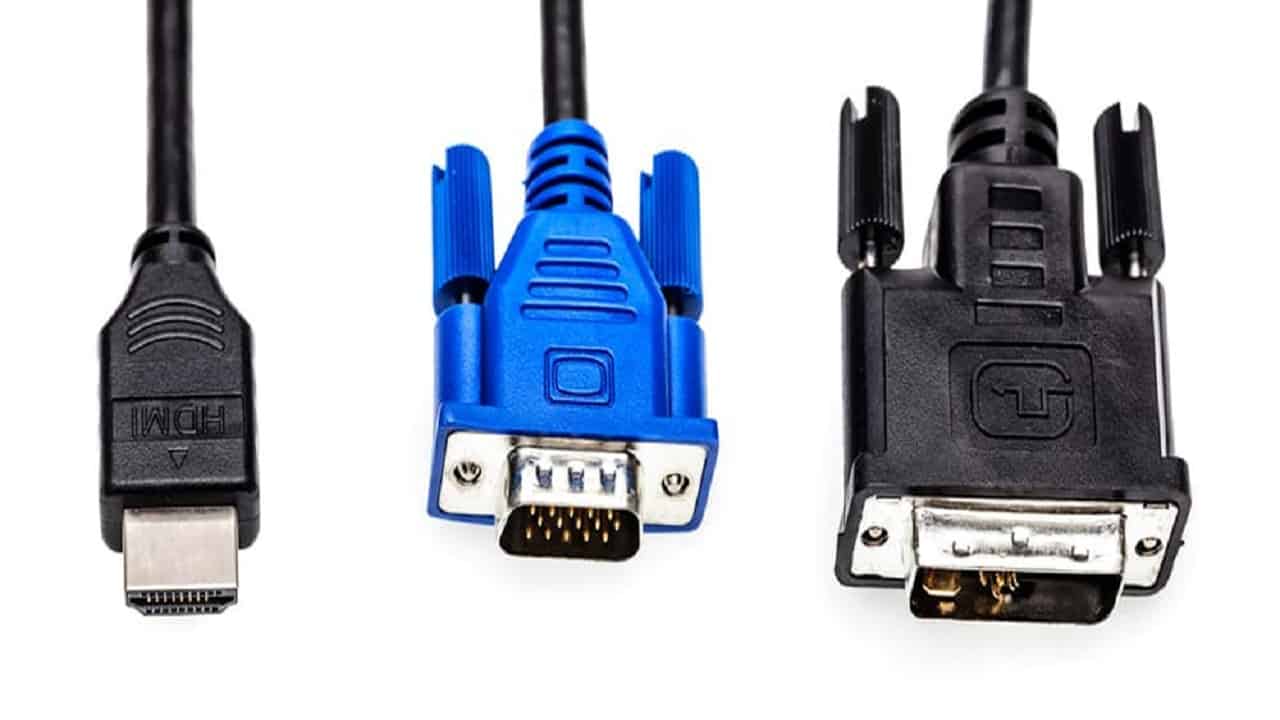
![Best Mousepad For High DPI [7 Amazing Picks Reviewed] Best Mousepad For High DPI [7 Amazing Picks Reviewed]](https://maximum-tech.net/wp-content/uploads/2022/02/best-mousepad-for-high-dpi-150x150.jpg)
![Best CPU For Programming In 2022 [7 Picks For Every Budget] Best CPU For Programming In 2022 [7 Picks For Every Budget]](https://maximum-tech.net/wp-content/uploads/2022/02/best-cpu-for-programming-150x150.jpg)
![How To Change CPU Fan Speed Without Bios? [Easy Guide] How To Change CPU Fan Speed Without Bios? [Easy Guide]](https://maximum-tech.net/wp-content/uploads/2022/05/How-To-Change-CPU-Fan-Speed-Without-Bios-150x150.jpg)
![Best CPU for Minecraft In 2022 [7 Worthy Picks Reviewed] Best CPU for Minecraft In 2022 [7 Worthy Picks Reviewed]](https://maximum-tech.net/wp-content/uploads/2022/04/best-cpu-for-minecraft-150x150.jpg)
![Best CPU Under 0 - An EPIC Buying Guide [2022] Best CPU Under 0 - An EPIC Buying Guide [2022]](https://maximum-tech.net/wp-content/uploads/2022/02/best-cpu-under-300-150x150.jpg)
![How To Know If CPU Is Dead? [A Comprehensive Guide 2022] How To Know If CPU Is Dead? [A Comprehensive Guide 2022]](https://maximum-tech.net/wp-content/uploads/2022/04/How-To-Know-If-CPU-Is-Dead-150x150.jpg)